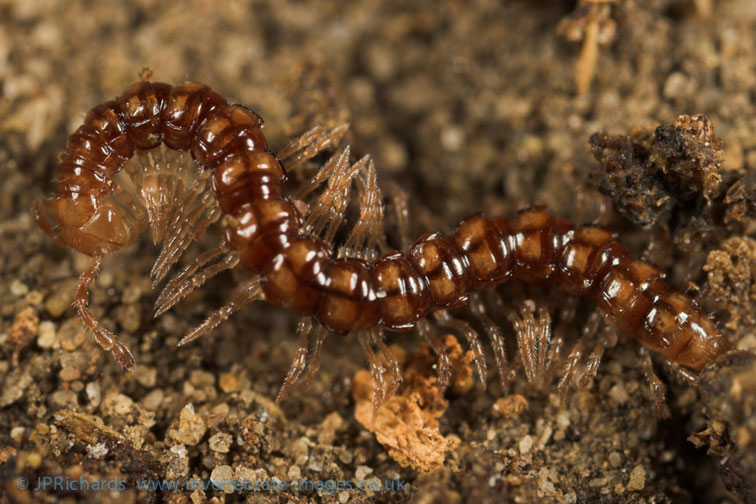Stosatea italica (Latzel, 1886)
Status:
- GB IUCN status: Least Concern
- GB rarity status: Nationally Scarce
ID Difficulty
Identification
This is usually a distictive millipede, with a smooth darkly pigmented body with contrasting pale patches. Confusion is possible with Polydesmus species (or even Choreudeumatidans, such as Craspedosoma rawlinsii, which have conspicuous eyes).
Distribution
This species is presumed to be an ancient introduction. Although it has been most frequently recorded from Kent, there are scattered records from south east England, from around the Severn estuary and from southern Ireland. There is also an isolated record from the Shrewsbury area. Kime (1995) noted that the species appears not to persist at a site for long but it has been recorded from at least one of the sites in Kent over a period of many years.
The natural range of the species is in Italy and neighbouring areas of the Mediterranean (Kime, 2001) but it has been introduced to synanthropic sites in countries further north including France (Demange, 1981), Luxemburg (Remy & Hoffman, 1959) and Switzerland (Pedroli-Christen, 1993). It has also been introduced to Madeira (Blower, 1985).
Habitat
Although Kime (1978) and Blower (1985) associated the species with synanthropic sites, only 35% of records submitted to the recording scheme were from urban or suburban locations. However, 92% of the records were from calcareous soils, a finding that is in agreement with Kime (1978). There are insufficient habitat data available for reliable conclusions to be drawn from any further analysis of recording scheme data.
Phenology
In Britain and Ireland adults have been recorded in January, April, May, July and October.
This species account is based on Lee (2006).
Links
MilliBase - Global catalogue of Millipedes: https://millibase.org/aphia.php?p=taxdetails&id=952510




